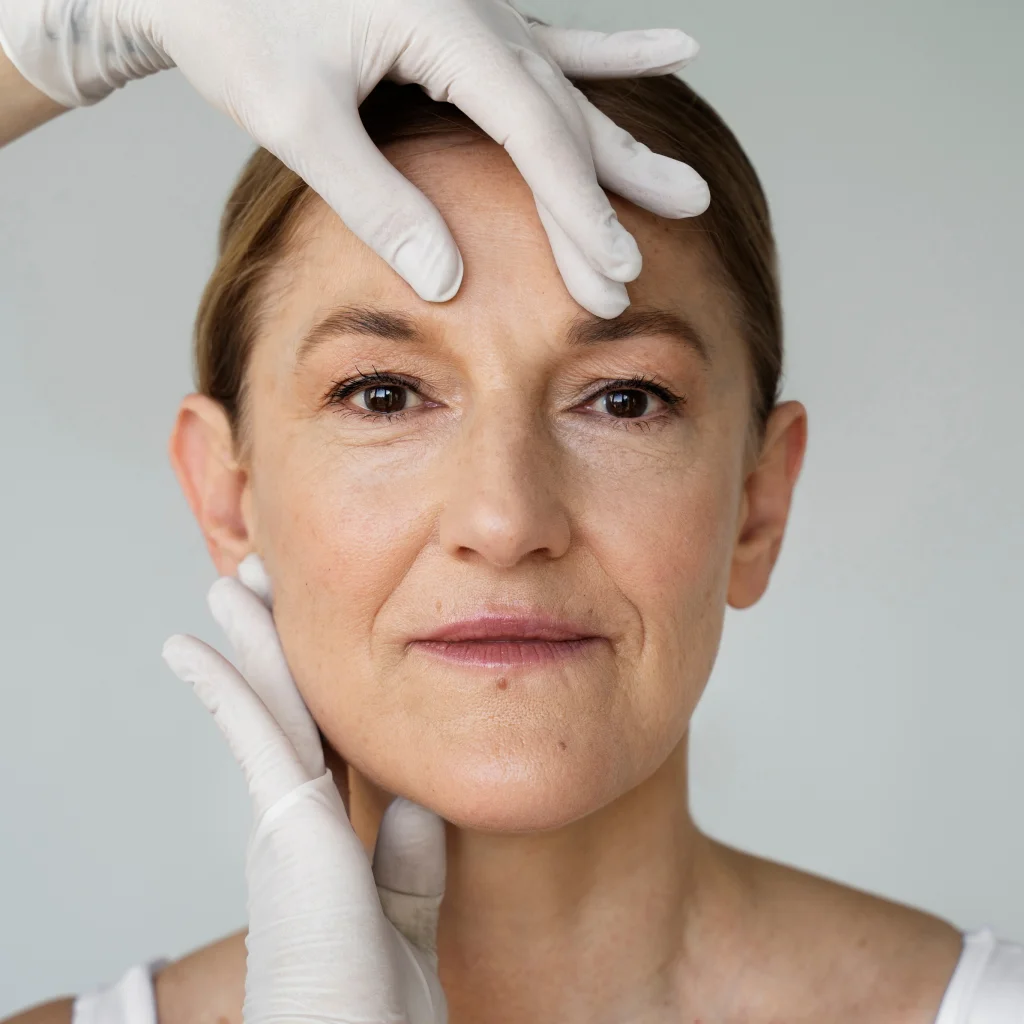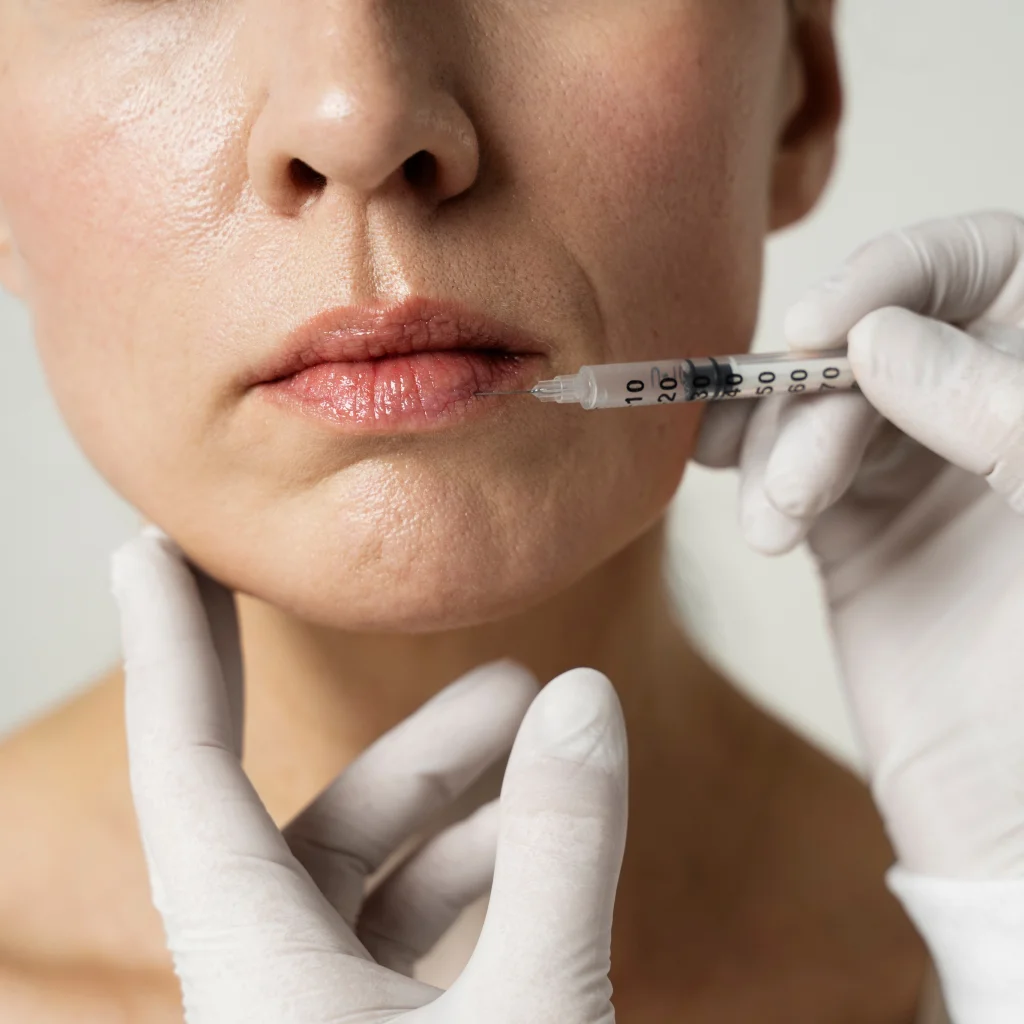The term skin tumor is used to refer to all the lumps that originate from the human skin, the parts of the skin such as the sebaceous glands, subcutaneous and dermis. Skin tumors are divided into Benign and Malignant. Read more about skin tumors.
The term skin tumor is used to refer to all the lumps that originate from the human skin, the parts of the skin such as the sebaceous glands, subcutaneous and dermis. Skin tumors are divided into Benign and Malignant. Read more about skin tumors.
The skin is the largest organ of the human body. In adults it has an average weight of 4 kg and a surface area of 1.8 m2 . It consists of 3 layers, the epidermis, dermis and subcutaneous fat, and the skin appendages. The epidermis makes up 5% of the thickness of the skin and is formed by a multifocal keratinized epithelium. It includes keratinocytes, which are the main cells of the epidermis and form a protective layer of keratin on its surface, melanocytes which produce melanin that protects the skin from ultraviolet radiation, and other cells that play a role in immunity or act as mechanoreceptors. The dermis makes up 95% of the thickness of the skin and includes collagen and elastin fibres, proteoglycans (special structural fibres such as hyaluronic acid), capillaries, nerves, muscles, fat and cells involved in the body’s defences. Skin appendages are the hairs, sweat glands and sebaceous glands, and are found in the dermis or within the subcutaneous fat. The function of the skin includes, among other things, protection from the environment, ultraviolet radiation, microbes, fluid loss, and is involved in thermoregulation, sensation and the body’s immune mechanism.
Benign lesion that looks very much like squamous cell carcinoma and resolves on its own. It usually occurs on sun-exposed areas of the body, has the appearance of a nodule with a keratinised central part and grows rapidly (up to 2 cm within 1-2 months) and then regresses, usually within 6 months. There is a risk that it may degenerate into squamous cell carcinoma and surgical removal is therefore recommended.
Severe form of hyperplasia of the sebaceous glands of the nose. It is considered the final stage of rosacea. The sebaceous glands swell and fill with keratin, giving the nose the characteristic deformity that has been wrongly associated with alcohol consumption. It is treated by tangential excision of the hyperplastic elements.
Precancerous lesion appearing at a very young age on the scalp as an orange-yellow plaque. After puberty it has a 20-30% chance of metastasis to basal cell carcinoma. It is surgically removed in one or more operations before puberty, usually under local anaesthesia.
Benign lesion arising from nerve tissue. It can occur at any age or as part of the neurofibromatosis syndrome (Von Recklinhausen’s disease), mainly in the trunk and limbs. The lesions take the form of soft pink or skin-coloured nodules and are treated by surgical removal under local anaesthesia.
A benign lesion usually occurring on the limbs and taking the form of a hard skin-coloured nodule. It is treated by surgical removal under local anaesthesia if it causes problems.
A benign lesion resulting from localised fat hyperplasia. Occurs at any age, mainly on the trunk and limbs, and appears as a subcutaneous nodule. It is treated, mainly for aesthetic reasons, by surgical removal under local anaesthesia.
nevi are benign tumours originating from melanocytes. Normally melanocytes are found in the epidermis, but when they leave the epidermis and sink into the dermis they are called spiromal cells. Thus, nevi are divided into melanocytic and spilocytic.
These include pubic lice, where there is increased production of melanin without proliferation of melanocytes, and benign freckles, where there is proliferation of melanocytes along the lower (basal) layer of the epidermis. They are treated mainly for aesthetic reasons by cryopreservation or chemical peeling.
Benign lentil
They are divided into congenital and acquired.
These are dark spots that are evident at birth or become noticeable within the first year of life. They occur in 1-2% of the population and are usually found on the trunk. They are dark in colour and often have hairs. They are divided into small, medium and giant. Giant ones , i.e. those with a diameter of more than 20 cm, have a 5-20% chance of developing melanoma. For this reason, it is recommended to remove them at an early age.
Giant nevus
Acquired dark spots appear during childhood and increase during adolescence and adult life. Depending on the level at which the cells are located, they are divided into connective, mixed and intradermal or choroidal. The endodermal (choroidal) cells are flat, hyperexcited, open, and intact.
The connective ones are flat, smooth and dark in colour while the mixed ones have characteristics between the two others.
Connective nevus
Mixed nevus
Intradermal nevus
Dysplastic nevi are a special category of acquired pigmentary nevi and have characteristics similar to those of melanoma. They are large in size (>5 mm), have an irregular contour and variegation, and there is a 10% chance of degeneration into melanoma. For this reason, surgical removal is recommended.
Skin cancer is the most common cancer in humans. Unlike other malignant tumours, malignant skin tumours can be diagnosed relatively easily by their history and by a good clinical examination. The aetiology of skin cancer is multifactorial, but solar radiation plays an important role. Symptoms and signs that may indicate malignant transformation of a skin lesion include: (1) recent rapid appearance or change of a skin lesion, (2) lesion showing ulceration or periods of ulceration and healing, (3) itching, (4) pain.
It is the most common cancer of the white race. It occurs mainly in middle and older age and 85% is located in the head and neck area. Although it has characteristics of a malignant tumor it does not metastasize, but only infiltrates locally. It can be divided into nodular-ulcerous (with a typical ‘pearly’ appearance with superficial vessels), superficially expanding (with a red plaque appearance resembling eczema), sclerosing (a white-yellow lesion with fuzzy borders resembling a scar) and dark-skinned (resembling nodular-ulcerous but with brown-black pigment).
Nodular
Erythematous
Superficially expanding
Sclerotic
Pigmented
It is treated in its very early stages with cryotherapy, electrocautery, scraping or fluorouracil cream, but surgical removal is usually recommended as its definitive treatment.
It is the second most common malignant skin tumour (10-20%). It is usually seen in older people in exposed areas of the skin, and appears as a red nodule with hyperkeratotic elements or as an ulceration that does not heal. It often occurs in areas with pre-existing precancerous lesions (actinic keratosis, keratoacanthoma, Bowen’s disease), and its clinical behaviour depends on its degree of differentiation – the more undifferentiated it is, the more aggressive. It is generally much more aggressive than basal cell carcinoma and can metastasize to the epithelial lymph nodes in 5-15%. Its treatment must be aggressive and includes surgical removal and long-term postoperative follow-up (3-5 years) for early recognition of recurrences and metastases.
It is misleadingly called malignant melanoma (since there is no such thing as benign melanoma) and is the most serious form of skin cancer. It is a malignant tumour of melanocytes, highly aggressive, and accounts for 2% of all cancers. Unfortunately it appears to double in incidence every 8-10 years, and the overall lifetime risk of developing melanoma is 0.5%. Etiology The main causative factor is exposure to ultraviolet radiation, and even short-term intensive exposure at a young age (episodes of severe sunburn before the age of 10 years increase the risk of developing melanoma by 4 times!) People with fair skin colour, freckles, light eyes and red hair are particularly susceptible. Melanoma can occur newly (80%) or in a pre-existing lesion (such as dysplastic nevi and giant dark spots) (20%). Diagnosis Early diagnosis is fundamental for a good prognosis of melanoma. For this reason, any skin lesion showing a change in appearance or behaviour should be considered suspicious. Basic clinical features of melanoma (ABCDE rule)
Secondary clinical features
Benign lesion that looks very much like squamous cell carcinoma and resolves on its own. It usually appears on sun-exposed areas of the body, has the appearance of a nodule with a keratinised central part and grows rapidly (up to 2 cm within 1-2 months) and then regresses, usually within 6 months. There is a risk that it may degenerate into squamous cell carcinoma and surgical removal is therefore recommended.
A severe form of hyperplasia of the sebaceous glands of the nose. It is considered a terminal stage
It is considered the final stage of rosacea. The sebaceous glands swell and fill with keratin, giving the nose the characteristic deformity that has been wrongly associated with alcohol consumption. It is treated by tangential excision of the hyperplastic elements.
Precancerous lesion appearing at a very young age on the scalp as an orange-yellow plaque. After puberty it has a 20-30% chance of metastasis to basal cell carcinoma. It is surgically removed in one or more operations before puberty, usually under local anaesthesia.
Benign lesion arising from nerve tissue. It can occur at any age or as part of the neurofibromatosis syndrome (Von Recklinhausen’s disease), mainly on the trunk and limbs. The lesions take the form of soft pink or skin-coloured nodules and are treated by surgical removal under local anaesthesia.
A benign lesion that usually occurs on the limbs and takes the form of a hard skin-coloured nodule. It is treated by surgical removal under local anaesthesia if it causes problems.
As far as the prognosis of melanoma is concerned, the thickness of the lesion, as measured histologically at biopsy, appears to be of decisive importance. This measurement is made in millimetres and is called Breslow thickness. The thinner the lesion (<1 mm) the better the prognosis and survival. Very thick lesions (>4-5 mm) have a poor prognosis.
The initial management of a lesion suspected of being melanoma is resection for biopsy. Performing a biopsy sampling with removal of only part of the lesion is allowed only in very large lesions or in lesions located in anatomically difficult areas. If the diagnosis is confirmed and again depending on the thickness of the lesion, further resection is recommended (because it has been found to improve survival), which can be performed within 3-4 weeks. As mentioned melanoma is a very aggressive tumour, and the most common site of metastasis is the lymph nodes in the area. In cases with clinically positive lymph nodes, lymph node cleansing is required to remove infiltrated lymph nodes, and in cases with 1-4 mm thick tumours without clinically palpable lymph nodes, it was found that prophylactic lymph node cleansing can improve survival (as it is considered that these patients have a high probability of having already micro-metastasised lymph nodes). In very advanced stages, adjuvant therapy with interferon (increases survival), systemic chemotherapy (with moderate response), regional chemotherapy (isolating the circulation of the limb and administering high-dose chemotherapy – with good response but many complications) and radiotherapy (with poor response) are used.
More recently, the so-called sentinel lymph node technique has been applied to identify those patients who could benefit from preventive lymph node cleansing, avoiding its complications in other patients. The rationale for the technique is based on the observation that metastases always follow a specific path. Thus if we can identify the first lymph node in the area where metastasis may be likely to occur, its condition will be indicative of the condition of the other lymph nodes. In other words if the first or sentinel lymph node is negative for metastasis it is accepted that the other lymph nodes in the area will also be negative, so we do not need to do a lymph node clearance. If instead the sentinel lymph node is positive we now proceed to curative lymph node cleansing.
The aim is to detect any new melanoma (previous melanoma increases the risk of new melanoma to 3-5%) and to detect recurrences and metastases. Close follow-up of patients for 5-10 years is recommended. Another parameter to consider when talking about burns is that healing occurs by scarring. Often these scars are malformed and ricocheting, causing not only a hideous sight but also functional disturbances. It is therefore clear that such a disease, depending on its characteristics (extent, depth, age of the burn victim, etc.), can lead from complete healing to death. In developed societies, 77 % of burns are caused by flames, 13 % by hot water, 5,1 % by contact burns, 3 % by electrical burns and 1,9 % by chemical burns. The skin is made up of the epidermis and dermis, which in turn are made up of cell layers. The categorisation of burns is based on the level of damage to the skin, i.e. how deep into the skin the causative agent “reached”. Thus we have partial-thickness which in turn are divided into partial superficial and partial deep and full-thickness. The dermis contains epithelial cells responsible for the continuous renewal and regeneration of the skin. This means in practice that partial-thickness burns can heal on their own, in other times, depending on the depth and provided that these living cells are not destroyed by dehydration or contamination. In full-thickness burns where there is destruction of all epithelial cells, healing can only occur from the epithelial cells at the burn boundary at a very slow rate, which means that surgical intervention and coverage, usually with a skin graft, will probably be necessary. In thermal burns the depth of damage is a function of both the temperature of exposure and the duration of exposure. What are the factors that will lead the burn victim to a specialist centre?
What are the factors that indicate the severity of a burn?
Three factors endanger the life of the burn victim. These are inhalation burn, burn shock and contamination. It was mentioned above which are the signs that will lead us to the hospital. But until we get there, what can we do (for thermal burns)?





